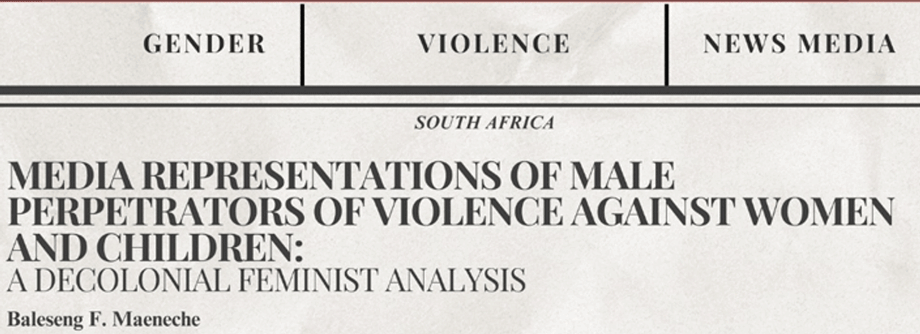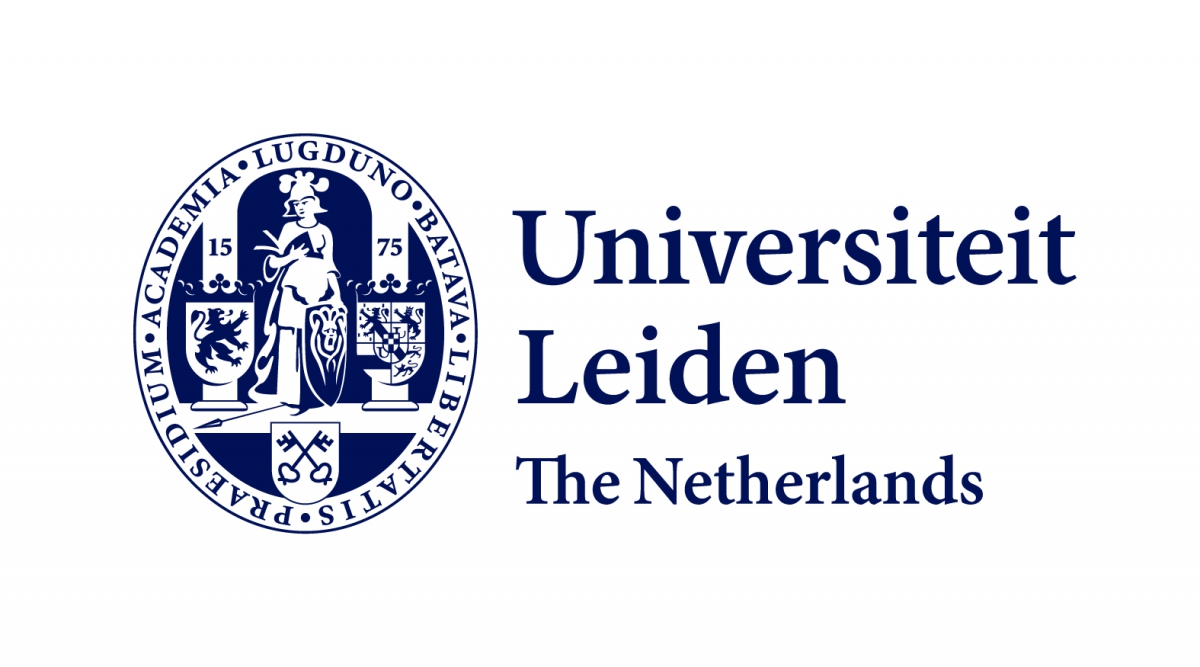Between the bulldozer and the bathroom: How to read gender-based violence against women and children in South African media


This blog was written by Baleseng Maeneche, winner of the Africa Thesis Award 2024. In it, she explores her thesis Media Representations of Male Perpetrators of Violence against Women and Children: A Decolonial Feminist Analysis, that she wrote for her Master of Arts in Women’s and Gender Studies degree at the Faculty of Arts & Humanities of the University of the Western Cape, South Africa.
Violence in South Africa is so ordinary that we often fail to see its manifestation in many faces, places and spaces. This is because headlines around us stop at sensational moments. What this research highlights is how these headlines rarely follow the threads that tie these moments of violence to histories of dispossession, policing and poverty. But the visibility of violence in South African news is painfully selective. This blog is a reflection and presentation of case studies that starts with life in a former African mining hub and follows the discourse of those realities into the newsroom.
The sharp, disorienting contrast of two worlds
I come from a city of many ‘firsts’. Kimberley’s story of development is visible in the Big Hole and its museum; the towering and now protected by a devil-fork fence statue of Cecil J. Rhodes stands as a constant reminder of the violence that produced wealth. These monuments tell one story: that of growth and prosperity. What the story does not include is that they stand on a history of violence: murder, rape, child labour, land dispossession and theft. The laws, institutions and profits that built that greatness have also produced an afterlife of deep socio-political and economic inequality. That inequality was the world I was born into and raised in.
Growing up in Galeshewe township and moving daily to and from a ‘Model C’ school exposed me to the sharp, disorienting contrast of two worlds. The oscillation from packed streets to generous, tree‑lined suburbs made clear, day after day, how dignity and belonging are unevenly handed out. For many in Kimberley and across South Africa, this split is normal; the structural violences behind it are rarely named, examined or disrupted. It took scholarship and sustained reading in decolonial and feminist thought for those silences to resolve into a pattern I could recognise: the everyday humiliations, the accepted exclusions, the systemic dispossessions that quietly make some lives less visible and more expendable. If the lion doesn’t tell its story the hunter’s account will dominate, stopped being abstract and became personal. That personal shift now guides me: I seek out the hidden institutions and power relations behind each image and headline. That is why I read the news through a decolonial feminist lens.
Naming violence
Decolonial feminist scholars insist we treat violence as layered, not a singular moment in an incubated space and time. Building on these, I too decided to attend to power, habit and representations of pervasive culture of violence in South Africa. I was interested in what lies beyond the spectacularised notions that dub South Africa as the ‘Rape Capital’ or the ‘Murder Capital’. Decolonial Feminists ask us to look beyond individual acts to the institutional and systemic forces that produce harm. Overall, they implore us to question the routines that social structures instil and encourage us to take apart the frames media use to make meanings stick. As a result, decolonial feminist perspectives show that systems which uphold social structures and institutions that produce meaning work together to reproduce inequality and contort particular versions of reality. Within this framework, naming is not neutral; it is power in action. A decolonial feminist reading reveals how naming violence determines which harms are foregrounded, which people are deemed to matter and which responses are considered reasonable and for whom. This is the lens through which conversations about gender-based violence against women and children (GBVAWC) must be situated: not as isolated incidents, but as expressions of broader systems of power.
Case studies: Gender-based violence against women and children
Two high‑profile 2018 cases show opposing newsroom scripts. In Joe Slovo (Port Elizabeth/Gqeberha), municipal officials demolished dozens of informal homes. One man climbed onto his roof holding his one‑year‑old daughter and according to reports, threatened to throw her. A scuffle with police followed and eventually the child was caught and saved. Media circulated dramatic images, published the father’s name despite ethical concerns about exposing a child, and framed the story through a spectacle, place and criminality. Charges were later downgraded, however, the family’s underlying housing insecurity received little sustained attention.
The Dros Steakhouse case began with a social‑media post and a harrowing video of an assault. Public fury focused on the video’s circulation and on whether media should name a white perpetrator. Coverage emphasised legal procedure, mental‑health assessments and courtroom developments while the debates over naming protocols and the ethics of sharing the video dominated public conversation. The perpetrator was ultimately convicted and sentenced to life imprisonment.
Together, these cases reveal editorial choices that either individualise violence through biography and pathology (Dros) or racialise and place‑brand it through spectacle and poverty shorthand (Joe Slovo). Both approaches obscure the broader institutional and systemic violences that make these headlines possible.
Finding legitimate and illegitimate violence
Accentuating the different types of violences that occur in society is where the distinction between legitimate and illegitimate violence becomes central to understanding GBVAWC in South Africa. It turns our attention and helps people step back from the salient bodily harm to see how those moments of harm are shaped and sustained by bigger systems and institutions. In zooming out, we see that news discourse draws an unstated line: violence is interpersonal.
Here, we see that interpersonal violence such a child thrown from a roof and a child being raped are framed as illegitimate, shocking and morally outrageous. It is the kind of violence that fits easily into headlines. However, state violence such as forced evictions, militarised policing and chronic housing shortages are rendered legitimate through bureaucratic language and legal framing. Bulldozers become ‘law enforcement’; resistance becomes ‘criminality’. The spectacle of a man throwing a child from a roof is condemned, while the conditions that led to that moment, that of poverty and being unhoused as a result of the demolitions, and most importantly, the culmination of these condition to the erasure of dignity, are treated as routine governance. On the other hand, the Dros case offers a stark example. A white man raped a Black child in a family restaurant bathroom. This was both a brutal act of gendered and racialised violence when held up against South African systems of power. Yet media coverage focused heavily on the perpetrator’s biography: his mental health, his family background, his courtroom demeanour. This individualised framing positioned him as an exception, a troubled man rather than a product of systemic conditions. The racial dynamics of the case left unspoken. The violence was treated as aberrant, not as part of a broader pattern of GBVAWC rooted in power, race and entitlement.
This differences in these news framing matter. It narrows the public imagination of responsibility: punishment is directed at the body, not the institution or its systems. Outrage is channelled toward individuals rather than institutions. Punitive responses are legitimised while they disproportionately target impoverished, Black communities. And the double bind is erased in that we are subtly socialised into knowing that resisting legitimate violence often invites more legitimate violence, and that survival itself can be criminalised. Together, these cases reveal how media frame violence through a hierarchy of legibility. When the perpetrator is white and the violence interpersonal, the coverage leans toward individualisation and exceptionalism. When the perpetrator is Black and the interpersonal violence intersects with systems of violence, the coverage leans toward criminalisation and decontextualisation of the narrative. I am not condoning one case over the other, nor am I flattening these cases to an ‘Olympics of pain’; what this study as a whole did, was highlight that both approaches obscure institutional and systemic violence. Whether it’s the entitlement that enables GBVAWC or the institutional brutality of eviction and displacement.
Both cases reinforce the unstated line between violence that shocks and violence that is silently absorbed, accepted and advocated for by those higher in the social hierarchy.
Reading the news through a decolonial feminist lens
The work of unearthing discourse around violence through a decolonial lens is not simply about bias or representation. It is about how violence is structured into everyday life and how narratives and institutions of meaning-making media become complicit in that structuring. The language of news through its headlines, its silences and/or its framing, teaches us how to feel, who to fear and what to forget. It teaches us that some violences are aberrations, while others are just the cost of doing business.
Therefore, to read the news through a decolonial feminist lens is to refuse this hierarchy. It is to ask what systems and institutions sit behind a single image or headline. It is to recognise that the line between legitimate and illegitimate violence is not drawn by the severity of harm, but by the power of those who name it. And it is to insist that justice begins not with punishment, but with the refusal to look away from all types of harm.


Add new comment